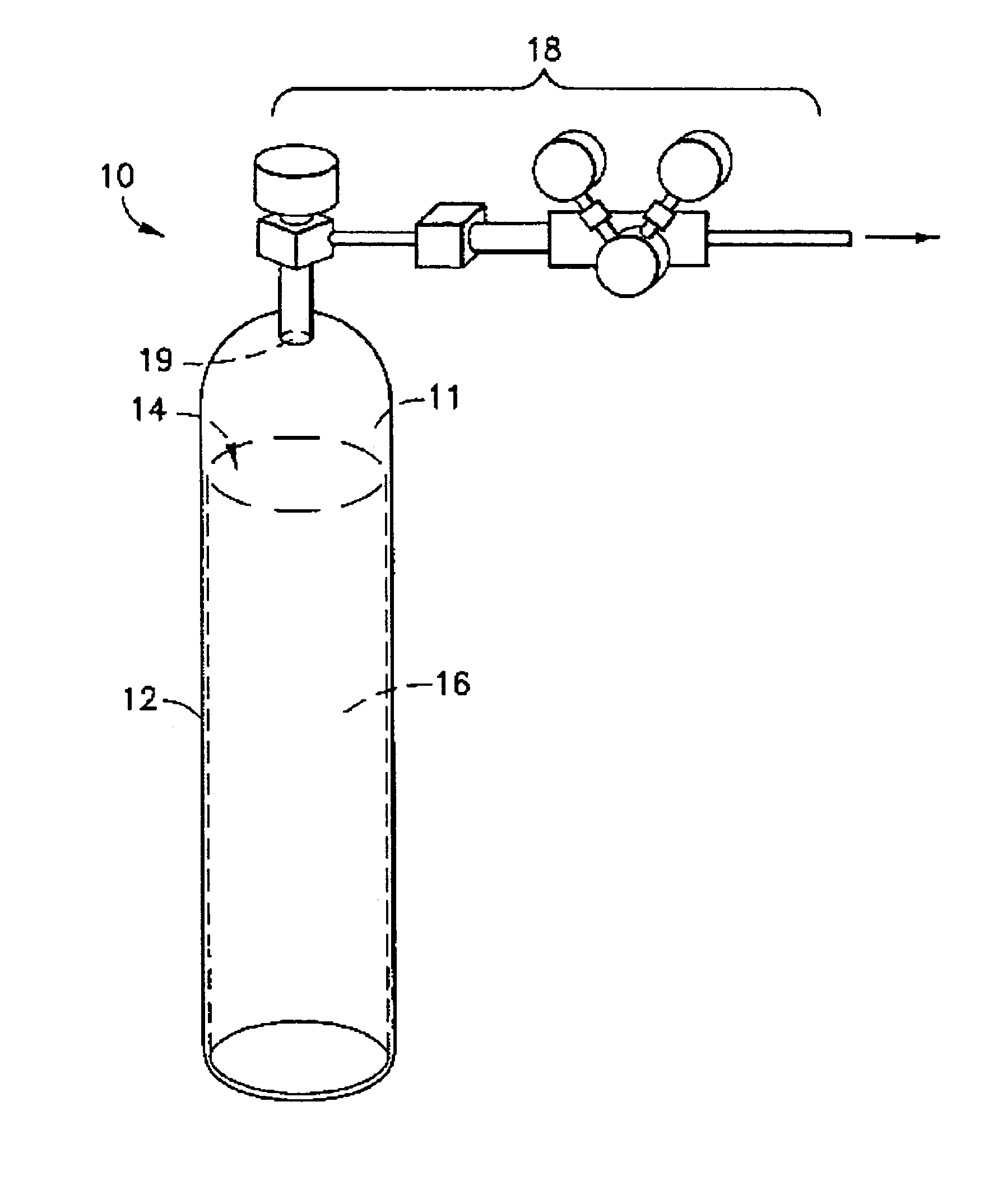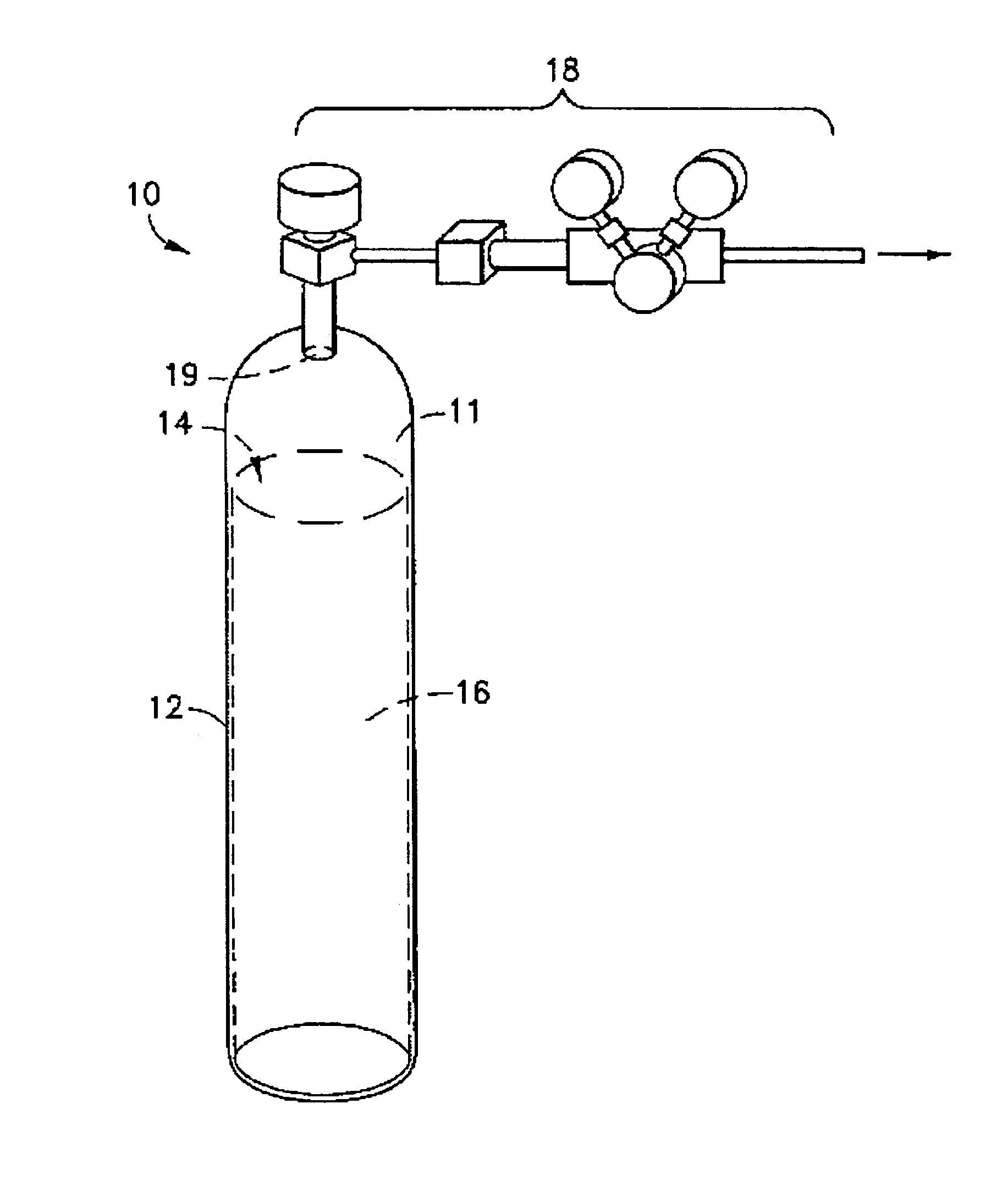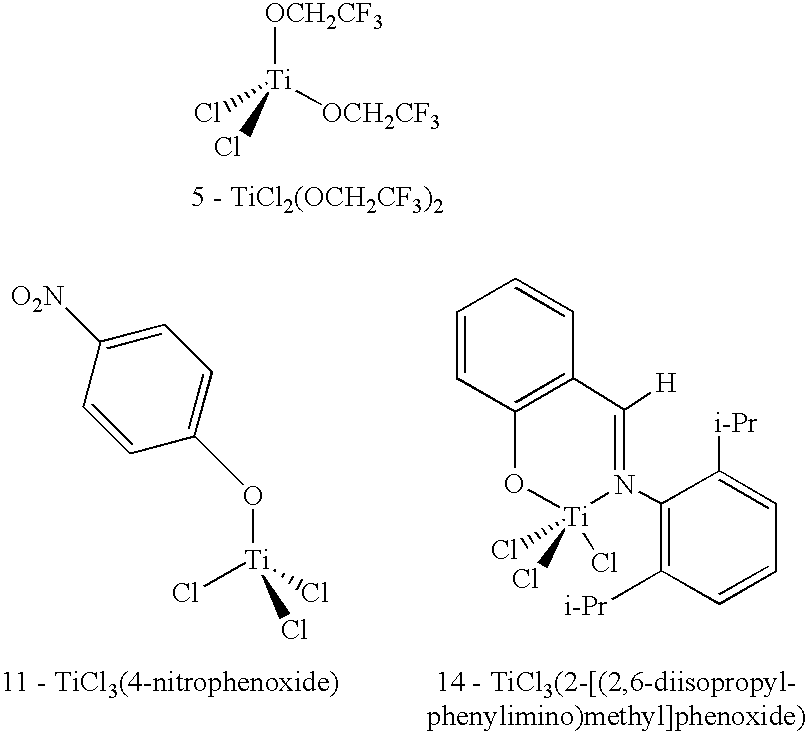Liquid media containing Lewis acidic reactive compounds for storage and delivery of Lewis basic gases
a technology of acidic reactive compounds and liquid media, which is applied in the direction of physical/chemical process catalysts, separation processes, semiconductor/solid-state device details, etc., can solve the problems of high gas storage and environmental protection risks, toxic gas storage under high pressure in metal cylinders is often unacceptable, and the storage and delivery system is not without problems, so as to achieve high gas (or working capacity
- Summary
- Abstract
- Description
- Claims
- Application Information
AI Technical Summary
Benefits of technology
Problems solved by technology
Method used
Image
Examples
example 1
Comparative
BMIM+Cu2Cl3− (1), Lewis Acidic Ionic Liquid
No Reactive Compound
[0070]The purpose of this example is to provide a control. No reactive compound was used in combination with the Lewis acidic ionic liquid.
[0071]Molecular modeling was used to approximate the effectiveness of BMIM+Cu2Cl3− as a reactive liquid. The ionic liquid was modeled as an ion-pair, using 1,3-dimethylimidazolium as the cation, Cu2Cl3− as the anion, and it was assumed that one equivalent of PH3 reacted with each equivalent of copper (concentration of Cu reactive groups=9.7 mol / L). Structures were calculated using Spartan SGI Version 5.1.3 based on Density Functional Theory (DFT) with minimum energy geometry optimization at the BP level with a double numerical (DN**) basis set. This Lewis acidic ionic liquid was calculated to have an average ΔErxn of −5.5 kcal / mol for its reaction with PH3. Since ΔGrxn is of higher energy than ΔErxn and the optimum ΔGrxn for the pressure range 20 to 760 Torr at room tempera...
example 2
Comparative
TiCl4 (2), Volatile Lewis Acidic Liquid for PH3
No Reactive Compound
[0074]The purpose of this example was to provide a second control using a reactive liquid in the absence of a Lewis Acid reactive compound.
[0075]A 50 mL reactor was charged with 12.56 g of TiCl4 (liquid, density=1.73 g / mol), the reactor was cooled to ca. 7° C. in and ice bath, and the general procedure for measuring PH3 reaction was followed. The liquid reacted with 100.3 mmol of PH3, corresponding to 13.8 mol PH3 / L of TiCl4 at an equilibrium vapor pressure of 428 Torr and a temperature of 12° C. A bright yellow solid results upon reaction of PH3 with liquid TiCl4. As a result, the isotherm for this reaction is an S shape rather than a conventional Langmuir isotherm.
[0076]The results show % reversibility=41%, working capacity=5.6 mol / L (12° C., 44-428 Torr). The delivered gas, because of the high vapor pressure of the TiCl4, is contaminated with the volatile titanium complexes and would require scrubbing ...
example 3
Molecular Modeling
[0077]Molecular modeling was used to help predict potentially useful titanium compounds for reversibly binding PH3 based on comparison with the systems of Examples 1 and 2 above. Structures were determined using the DFT method described above (Spartan SGI Version 5.1.3, minimum energy geometry optimization, BP level, double numerical (DN**) basis set). The results are listed in Table 1. Most of the modeled compounds were predicted to react with 2 equivalents of PH3 (2 available coordination sites), in which case a value for ΔErxn was calculated for the first (ΔE1) and second (ΔE2) reaction. If the first reaction was calculated to be unfavorable, the second reaction was calculated to determine if favorable. For compounds containing only 1 coordination site, a value does not exist for ΔE2 (N / R).
[0078]
TABLE 1Results from DFT Molecular Modeling- Reaction of Lewis Acids with PH3.ΔE1ΔE2Compound(kcal / mol)(kcal / mol)1BMIM+Cu2Cl3−−5.16−5.762TiCl4−3.34−2.133TiCl3(OCH2CH3)−2.2...
PUM
| Property | Measurement | Unit |
|---|---|---|
| vapor pressure | aaaaa | aaaaa |
| temperature | aaaaa | aaaaa |
| pressure | aaaaa | aaaaa |
Abstract
Description
Claims
Application Information
 Login to View More
Login to View More - R&D
- Intellectual Property
- Life Sciences
- Materials
- Tech Scout
- Unparalleled Data Quality
- Higher Quality Content
- 60% Fewer Hallucinations
Browse by: Latest US Patents, China's latest patents, Technical Efficacy Thesaurus, Application Domain, Technology Topic, Popular Technical Reports.
© 2025 PatSnap. All rights reserved.Legal|Privacy policy|Modern Slavery Act Transparency Statement|Sitemap|About US| Contact US: help@patsnap.com



